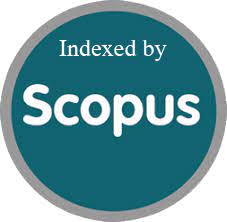Congenital Pyloric Atresia and Associated Anomalies: A Case Series
DOI:
https://doi.org/10.52783/jns.v2.52Keywords:
Pyloric atresia, Epidermolysis bullosa, pyloric diaphragm, Heineke–Mickulicz pyloroplastyAbstract
Congenital pyloric atresia (CPA) is a very rare surgical condition. Eleven patients with the diagnosis of CPA treated at our hospital were retrospectively studied for the age at diagnosis, sex, presenting symptoms, associated anomalies, operative findings, treatment and outcome. Male: Female is 8:3. The age at diagnosis ranged from one day to three years. Associated anomalies were seen in four (36.6%). These included epidermolysis bullosa (EB) in two, oesophageal atresia with distal trachea-oesophageal fistula in one, colonic atresia in one, sensorineural deafness and dysplastic kidney in one patient. All three types of CPA were observed; six (54.5%) had type 1, four (36.3%) had type 2 and one (9%) had type 3 [(core)]. Different procedures performed were Heineke–Mickulicz pyloroplasty, Finney's pyloroplasty and gastro-duodenostomy. Post-operatively, nine out of eleven did well while other two died giving an overall survival of 81.8%. Sepsis was the cause of death in both of them.
Downloads
Metrics
Published
How to Cite
Issue
Section
License
Copyright (c) 2013 Journal of Neonatal Surgery

This work is licensed under a Creative Commons Attribution 4.0 International License.
You are free to:
- Share — copy and redistribute the material in any medium or format
- Adapt — remix, transform, and build upon the material for any purpose, even commercially.
Terms:
- Attribution — You must give appropriate credit, provide a link to the license, and indicate if changes were made. You may do so in any reasonable manner, but not in any way that suggests the licensor endorses you or your use.
- No additional restrictions — You may not apply legal terms or technological measures that legally restrict others from doing anything the license permits.










